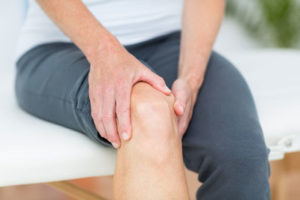An article published by Carolyn Crist of Reuter’s Health on March 11, 2019 summarizes a research review published in the British Journal of Sports Medicine analyzing the effects of the addition of hip exercises on walking, and pain for people with knee arthritis. The researchers used a collection of data from eight clinical trials involving a total of 340 patients which showed that patients with knee arthritis can also benefit from the addition of hip strengthening exercises that involve the use of elastic bands or weights to “improve the ability to walk and maybe reduce pain”.
Andrew Hislop, the lead author stated “despite knowing that exercise is beneficial, what type of exercise should be included in a thorough exercise program remains largely unknown”. Hislop informed Reuter’s health there would be an increase demand in health care to manage knee osteoarthritis with an increasing population.

When analyzing the gathered data, researchers focused on investigating how the addition of “resistance weight-lifting, functional neuromuscular exercises such as single leg squats or stepping, and so-called multimodal exercise that combined these two” to a current regimen impacted aspects of knee and walking form, pain, and quality of life.
The researchers concluded the addition of hip strengthening exercises alone “significantly improved walking function”, however, it “did not have a statistically meaningful effect on pain, stair function, or the ability to stand from a sitting position”. Although, when the exercises were evaluated individually, it was found that resistance exercises were more effective than functional neuromuscular exercises in improving knee pain and functioning.
Read the full article here.

According to Kate Rockwood, writer for O, The Oprah Magazine, in her article on the Huffington Post, creaky knees don’t have to be your destiny. Jordan Metzl, MD, a sports medicine physician at the Hospital for Special Surgery in New York City and author of The Exercise Cure suggests minimizing wear and tear on joints and tendons by strengthening the surrounding muscles. “Your body is like one long kinetic chain—every joint and muscle impacts how the surrounding parts move,” Metzl says.
Fortify these vulnerable places: Knees; Achilles Tendons; and Shoulders, and you’ll feel a lot stronger.
It might surprise you to learn just how much humidity can affect our bodies, says , writer for the Huffington Post. He explains that our joints contain sensory nerves called baroreceptors, that respond to changes in the weather. For example, when the weather is rainy and damp, the barometric pressure drops, causing our tendons, ligaments, and muscles to expand. However, for those who already have muscle or joint pain, expansion in the muscles, tendons, and ligaments can irritate the already-sensitive areas.
High humidity levels can eventually lead to a loss of body fluid and dehydration. Joint cartilage and the discs in our spine have high water content, and dehydration can decrease the concentration of fluid, agitating any arthritis that may be present.
Along with drinking lots of water, read the full article to find out what you can do to ease the effects of humidity.
